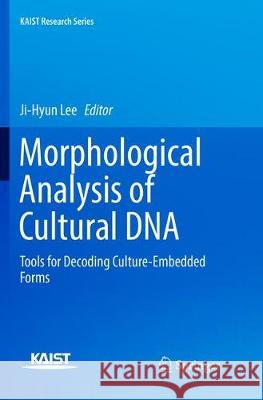Morphological Analysis of Cultural DNA: Tools for Decoding Culture-Embedded Forms » książka
topmenu
Morphological Analysis of Cultural DNA: Tools for Decoding Culture-Embedded Forms
ISBN-13: 9789811095924 / Angielski / Miękka / 2018 / 240 str.
Kategorie BISAC:
Wydawca:
Springer
Seria wydawnicza:
Język:
Angielski
ISBN-13:
9789811095924
Rok wydania:
2018
Wydanie:
Softcover Repri
Ilość stron:
240
Oprawa:
Miękka
Wolumenów:
01











